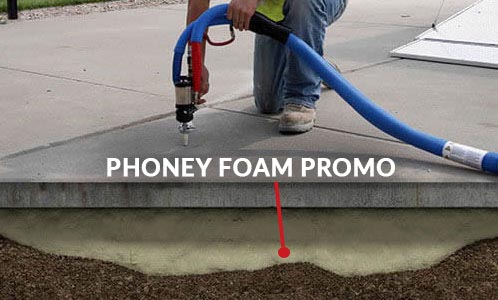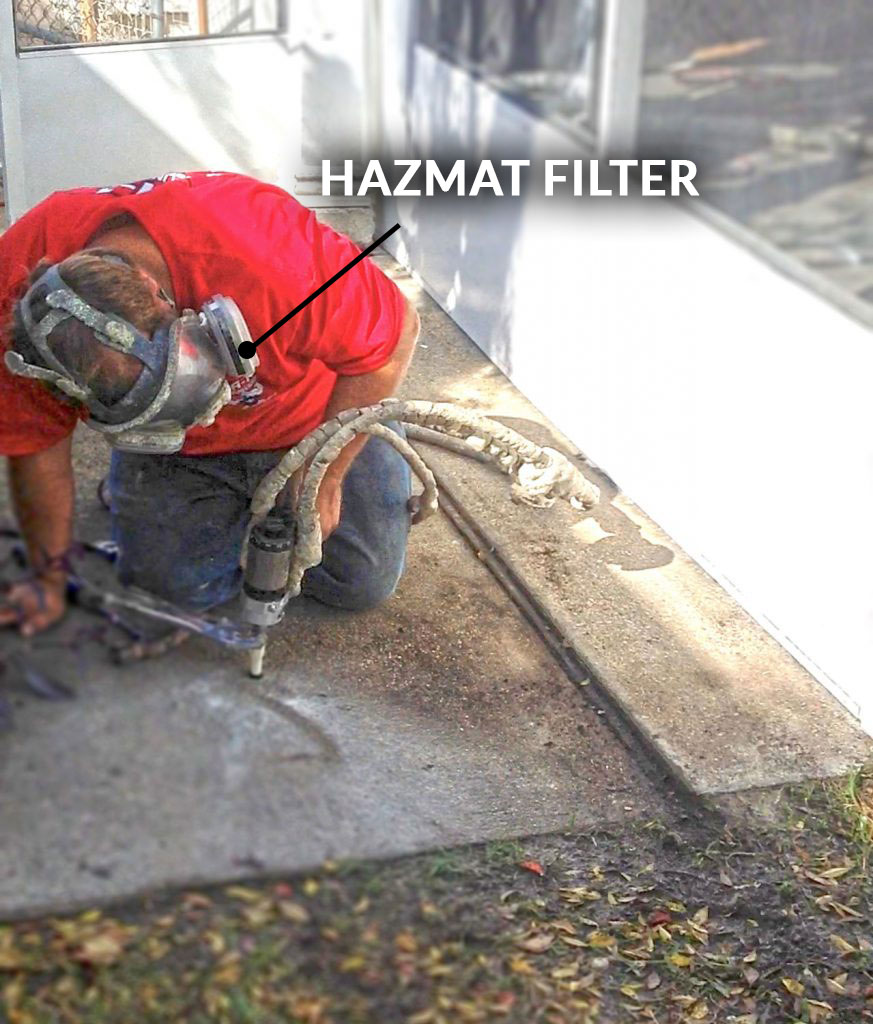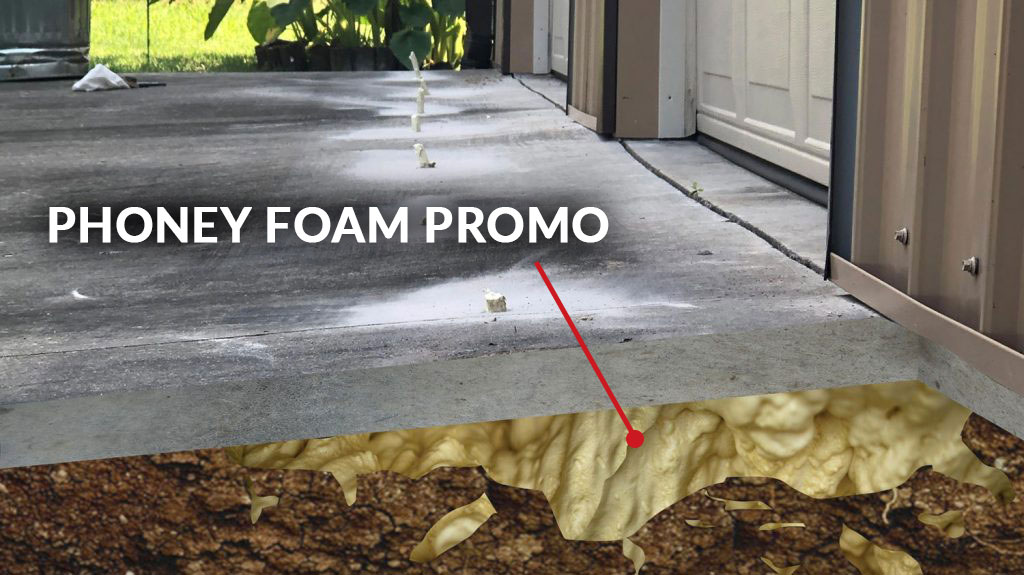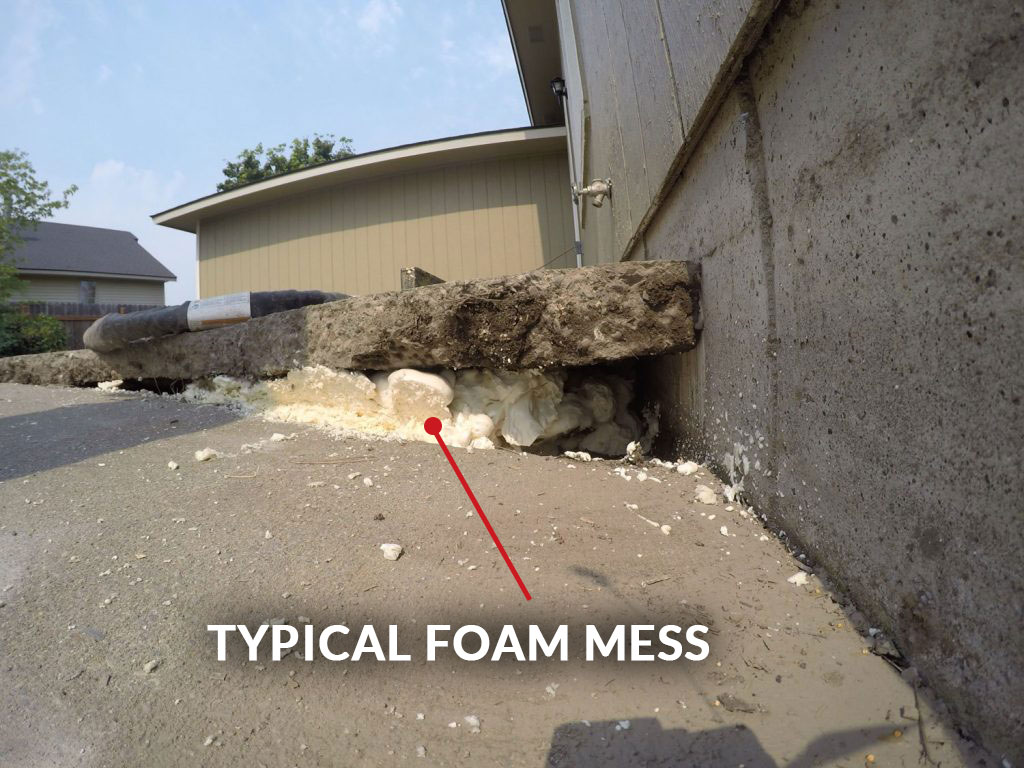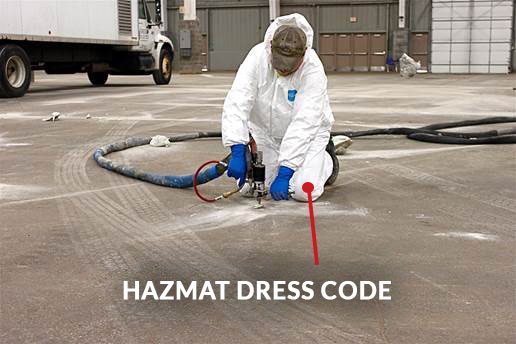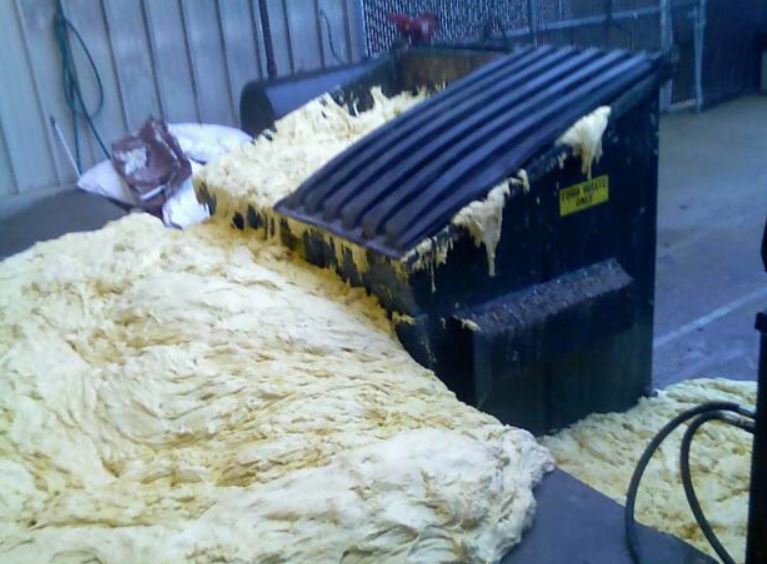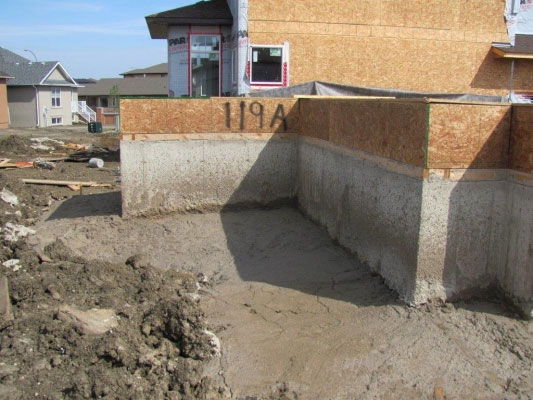Foam Jackers
Claiming poly-foam an economical alternative to conventional Mudjacking…is False & Misleading
- Poly-foam is far more costly than the natural clay/sand materials used in Mudjacking, which is why poly-foam contractors avoid estimating large cavity filling conditions, such as a front step cavity or a wash out;
- Mudjacking projects will always be less costly, will take less time, and will be better supported than any poly-foam jacking project;
- While poly-foam is a lighter product, less weight is of no benefit to a sub-grade, which is typically backfilled with a clay base material and compacted; Further, poly-foam projects lighter due to all the cavities left behind under the slab;
- Poly-foam jacking cavities provide unsanitary rodent habitants under the slab, which will ultimately result in damage to the adjacent landscaping;
- Mudjacking does not require heavy equipment;
- Mudjacking will support a load equally as soon as poly-foam, therefore driveways can be driven on within a few hours. However, since poly-foam jacking projects creates voids and cavities, it would be advised to never use a poly-foam jacked driveway again;
- The use of larger grout holes less than (2 in.) are required to raise and properly monitor the cavity filling progress under the slab. Monitoring cavity filling is not possible with poly-foam, which it cannot fill anyway;
- While traditional Mudjacking uses larger holes, there will be fewer holes required, whereas foam requires more than twice as many smaller ¾ inch holes;
- Poly-foam jackers will not discuss the extent of the cavities left unfilled, which are conveniently concealed by the concrete slab;
- Should further sinking occurs, subsequent injections with poly-foam will simply result in another foam blob on top of the first foam blob, basically creating a snowman shaped poly-blob under the slab, that makes the concrete slab unstable.
- Health & safety is jeopardized with poly-foam applications that involve a compilation of environmentally hazardous substances being injected around your home;
- While poly-foam chemically expands in all directions, its setting time can only fill a 12-inch glass cube before the material solidifies and stops flowing. Therefore it is standard to have 50 to 80% of the space under the concrete slab left as cavities.
- Mudjacking material clay/sand does not set up quickly and will remain pumpable and flowable during the project to ensure all cavities, created by the raising process, are filled in order to hold heavy loads without cracking
- As mentioned above, once water gets into the foam pores and freezes it will result in decomposition that breaks the foam into pellets that can be easily eaten by birds, other animals, and pets.
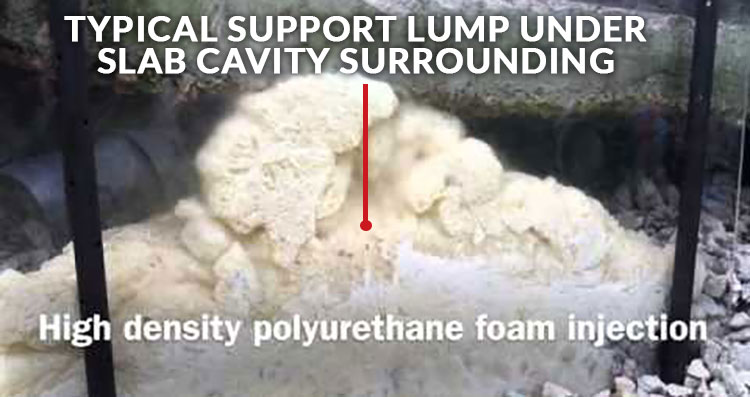
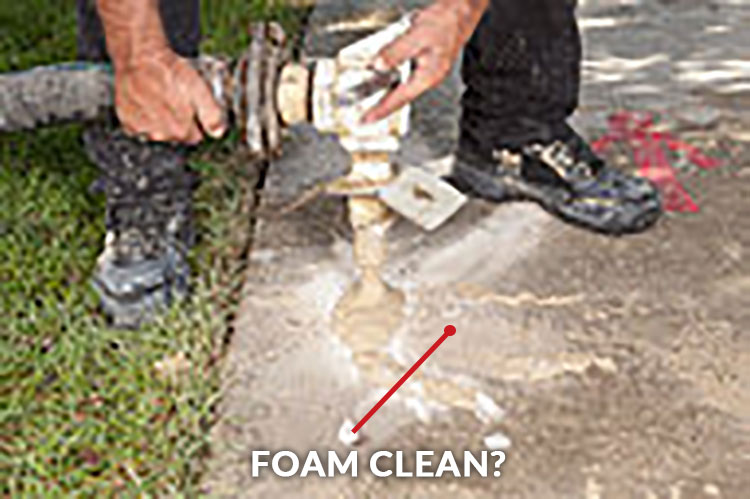
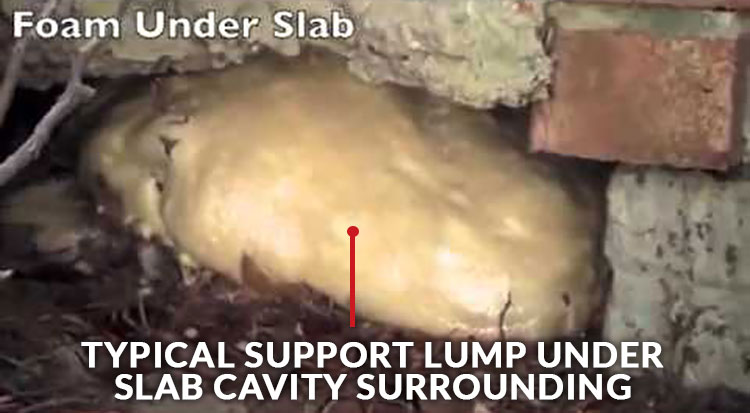
- Poly-foam will become deteriorated when mixed in ponding water under a slab, whereas Mudjacking will chase any ponding water out from under the slab.
- Should your concrete slab be removed in the future, any poly-foam blobs and concrete with foam adhered, will all have to be handled and disposed of as a hazardous waste.
